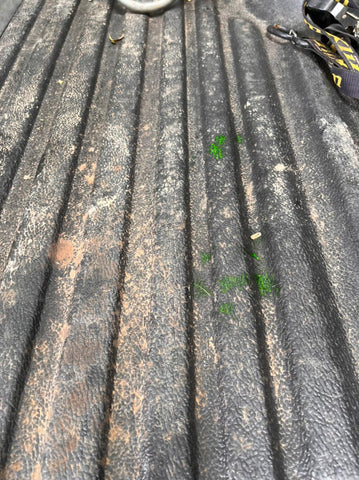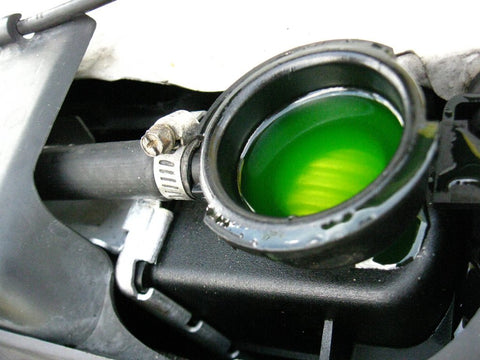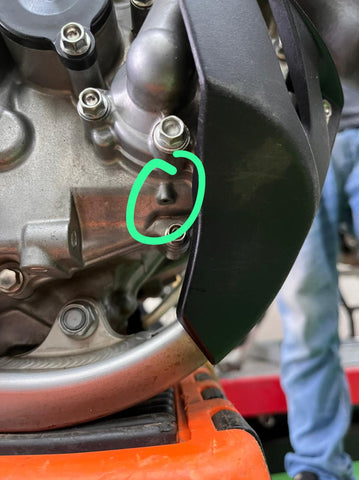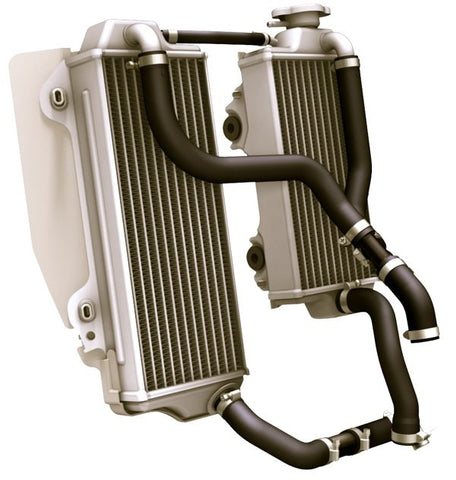
Your bike's coolant level might be low for a number of reasons, and not all of them involve a leak.
It's possible that you just changed the coolant, and now that the system's air locks have cleared, the coolant has to be filled off to the proper amount.

There is probably a leak, either from the radiator or someplace else, if the coolant hasn't recently been replaced. Since motorcycle coolant is confined within a sealed system, checking the coolant level when the engine is cold should reveal no changes provided the system is in excellent condition. Water expands when it's heated, thus the level will rise while the engine is warm, but it will drop back to the "cold" level when
Don't become alarmed if the level is decreasing. Repairing a coolant leak is often simple, but you may need to spend some time looking under and around it since certain leaks can be difficult to find.
Coolant leaks can be either internal or external. A coolant puddle under the bike indicates an exterior leak if you can find a drip on a hose, the engine block, or the radiator.
You have an internal leak, which indicates coolant is seeping into the engine, if there are no puddles below the bike yet the coolant level is lowering.
External leaks
Radiator cap leak
The pressure release valve on the filling cap of the coolant header tank is there to discharge coolant harmlessly if the pressure inside the system becomes too high.

The spring/valve inside the cap may occasionally deteriorate, causing it to leak coolant too soon.
This will be evident by coolant buildup near the header tank. A new cap can be the answer if the coolant system is otherwise in good condition.
The radiator cap, which serves the similar purpose in motorcycles without header tanks but is subject to wear over time, is also true in these cases.
Coolant pump seal leak
A seal on the coolant pump stops coolant from escaping past the bearing. If this seal fails then coolant can seep out where the coolant pump pulley shaft enters the pump housing.

If the pump's gasket has broken, there can also be a leak between the pump and engine block.
Because the coolant pump pulley may squirt coolant everywhere, it can be obvious if there are remnants of it in the engine compartment.
Coolant hose leak
A coolant leak can be started by the smallest pinprick in a hose, and in some cases, it won't be noticeable until the engine is hot.

With the motorcycle hardly moving, there could not be enough pressure in the system to detect a leak. But because coolant frequently leaves behind a coloured residue, there will be obvious indicators of a leak nearby.
If you take a close look around the engine, larger splits will be clear to see. Examine the metal clips that hold the hoses at either end as well since with time they may "bite" into the rubber and result in cracks.
Radiator leak
The deadliest enemies of a radiator are stone chips and ageing. The problem is that a little radiator leak might cause the coolant to evaporate before it can collect on the floor and reveal the leak's location.

Therefore, if there aren't any obvious radiator leaks, look for any discoloured spots on the radiator's fins or any little puffs of steam coming from the radiator while the bike is hot. Additionally, there will be more evidence than just the typical coolant odour in the engine area, so start sniffing!
Internal Coolant leaks
The coolant is likely seeping inside into the engine if the coolant level is falling and there is no visible outward leak.
The failure of the head gasket may have been triggered by recent overheating of the motorcycle. If it has, coolant leakage into the combustion chambers may be occurring.
Possible signs of head gasket failure:
- Coolant mixed with the oil (turning it milky if there is a severe leak).
- The underside of the filler cap is covered in a mayonnaise-like substance – although this is more likely to be caused by condensation if the bike is only ever used on short journeys.
- White smoke (steam) comes out of the exhaust, even when the engine is up to operating temperature.
- Overheating.
- Lumpy running, rough idle, poor starting.
- Coolant bubbling or 'froth' in the header tank.
- Water dripping from the exhaust manifold.
To check for a leak the technique is to pressurise the engine (via a spark plug hole) and measure the pressure loss during a leak-down test.

Comments